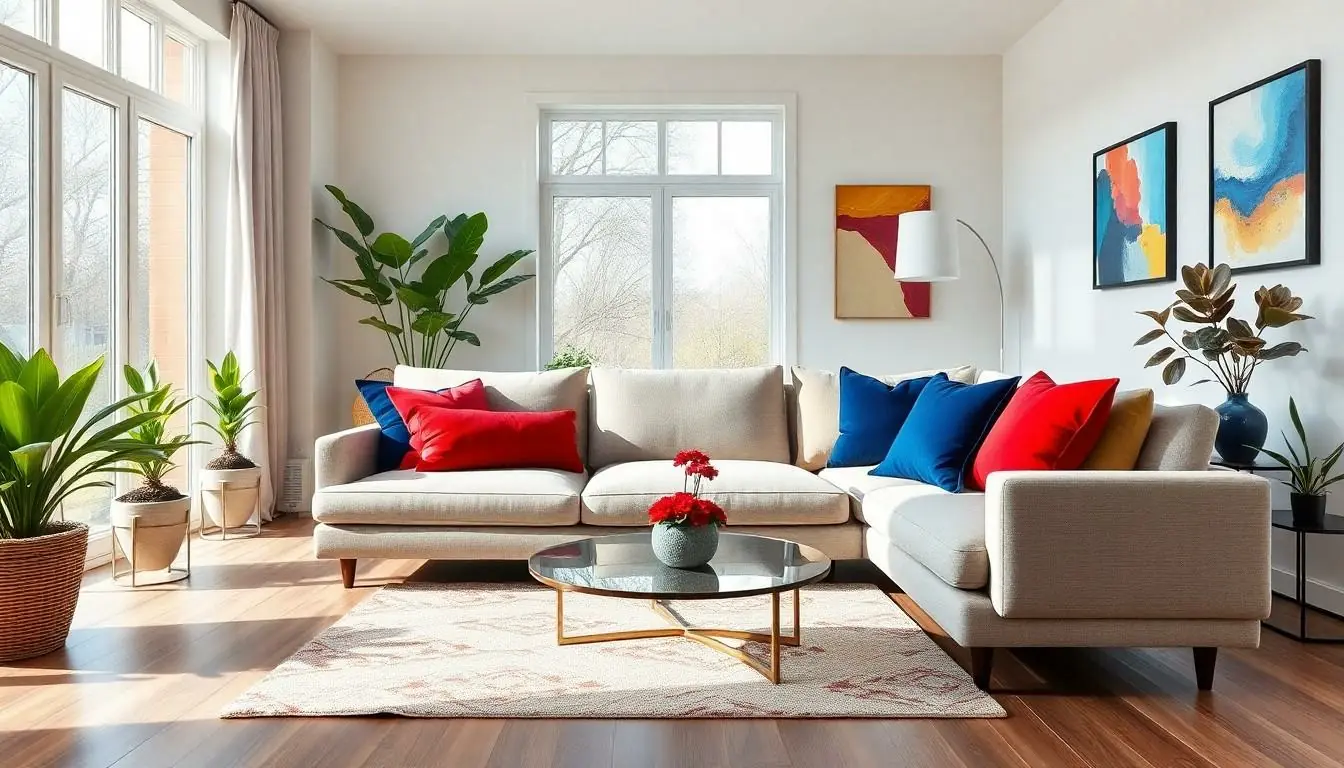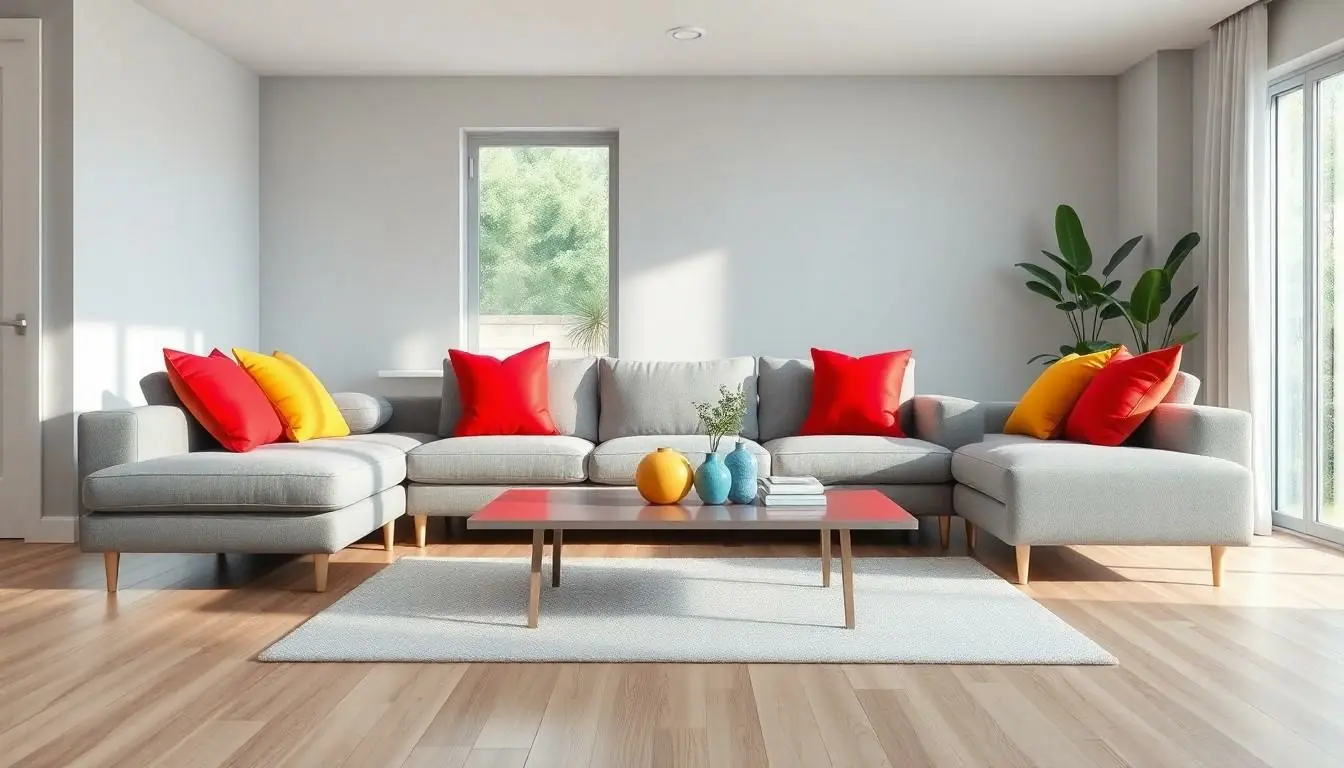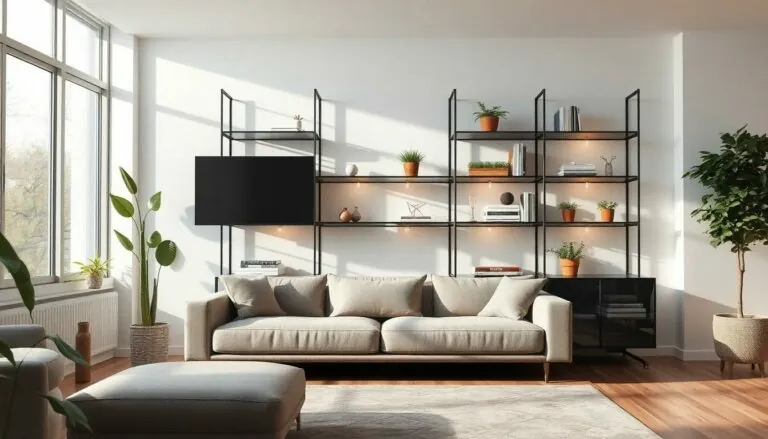Choosing the right color for a living room can feel like trying to pick a favorite child—everyone’s got an opinion, and the stakes are high. It’s the heart of the home, where laughter echoes and memories are made. So why settle for a bland beige when you can transform your space into a vibrant sanctuary that reflects personality and style?
From calming blues that whisper relaxation to bold reds that scream excitement, the color palette can make or break the vibe. Imagine curling up with a book in a cozy green oasis or hosting friends in a lively yellow retreat. With the right hues, a living room can go from “meh” to magnificent in no time. Dive in to discover the colors that’ll make your living room the envy of all your friends—because who wouldn’t want to brag about their stylish abode?
Table of Contents
ToggleImportance Of Color In Living Rooms
Choosing the right color for a living room significantly influences its atmosphere. Colors affect mood, impacting how individuals feel when entering the space.
Psychological Effects Of Colors
Colors evoke emotions and can influence behavior. For example, blue creates a sense of calmness and promotes tranquility. Green represents nature, fostering relaxation and balance. In contrast, red stimulates energy and passion, making it suitable for social interaction. Yellow brings warmth and cheerfulness, illuminating the room with brightness. Each color option can dramatically alter emotional responses, encouraging thoughtful selection.
Creating Ambiance With Color
Colors set the ambiance in a living room. Soft pastels provide a serene environment perfect for relaxation. Bold hues add drama and personality, creating a lively focal point. Warm tones invite comfort, making gatherings more enjoyable. Cool colors refresh the airiness, enhancing spaciousness. Choosing the right palette guides how guests perceive the room and enhances overall aesthetic appeal.
Popular Color Schemes For Living Rooms

Choosing the right color scheme sets the tone for a living room’s ambiance. Popular options include neutral tones and bold colors, both creating distinct atmospheres.
Neutral Tones
Neutral tones create a calming environment, perfect for relaxation. Shades like beige, taupe, and soft gray promote peace, making them ideal for family gatherings. These colors blend easily with various decor styles, whether modern or traditional. Neutral palettes enhance natural light, making spaces feel larger and more inviting. They act as a versatile backdrop for accent pieces, allowing homeowners to showcase artwork and furniture. Consider layering textures to add depth without overwhelming the space.
Bold Colors
Bold colors add vibrancy and energy, transforming any living space. Shades like deep blue, bright red, and rich emerald create focal points that capture attention. These colors stimulate conversation and can express personality effectively. When used strategically, bold hues make a statement while maintaining harmony with lighter tones. Pairing bold colors with neutrals softens their impact, creating balance. Accent walls, furniture, or accessories can introduce these vivid shades while allowing for flexibility as tastes evolve.
Choosing The Right Color For Your Living Room
Selecting the ideal color for a living room involves considering personal style and the room’s ambiance.
Consider Your Style
Personal preferences dictate whether someone gravitates towards modern minimalism or classic elegance. A contemporary aesthetic often thrives on bold colors and striking contrasts. Conversely, traditional styles may benefit from warm, muted tones that create a cozy atmosphere. Incorporating patterns with accent pillows or artwork can enhance overall design. Each choice influences the mood and functionality of the space. A homeowner should reflect on how they want guests to feel when entering the room.
Lighting Factors
Natural and artificial lighting plays a critical role in perceiving color. Bright, sunny rooms amplify lighter shades, giving a fresh and airy feel. Dim or shaded areas tend to absorb light, which can darken colors significantly. For instance, warm hues may appear more inviting with golden sunlight. Conversely, fluorescent lights can alter color perception, making tones appear colder. Testing samples in different lighting conditions ensures the selected color aligns with the desired outcome. Planning the color based on light sources optimizes the living room’s atmosphere.
Tips For Combining Colors Effectively
Combining colors effectively enhances the aesthetic appeal of a living room. Understanding basic color theory and utilizing specific techniques creates harmonious spaces.
Color Wheel Basics
The traditional color wheel simplifies color combinations into primary, secondary, and tertiary hues. Primary colors—red, blue, and yellow—serve as the foundation for all other colors. Secondary colors emerge by blending primary colors, such as green (blue and yellow), orange (red and yellow), and purple (red and blue). Tertiary colors result from mixing primary and secondary colors. Complementary colors, opposite each other on the wheel, create vibrant contrasts that can energize spaces. For a balanced palette, consider analogous colors that sit next to each other on the wheel, resulting in subtle transitions and a cohesive feel. Applying these principles assists in making intentional and effective color selections for living rooms.
Accentuating Features With Color
Using color strategically can highlight distinctive features of a living room. Select hues that draw attention to architectural elements, such as fireplaces or large windows. Soft pastels may frame a feature without overwhelming it, while vibrant colors can make aspects pop. Accent walls painted in strong colors can serve as focal points that anchor the room. Decorative elements like cushions, artwork, or rugs reinforce these colors and tie the space together. Utilizing the right shades in furniture or decor enhances visual interest, creating depth and dimension. This approach results in a cohesive and stylish atmosphere that reflects individuality.
Choosing the right colors for a living room is essential for creating a space that feels inviting and personal. By understanding the emotional and psychological effects of different hues, homeowners can craft an atmosphere that resonates with their individual style. Whether opting for calming neutrals or vibrant bolds, the right palette can enhance both comfort and aesthetic appeal.
Experimenting with color combinations and testing samples in various lighting can lead to stunning results. Ultimately, the living room becomes a reflection of one’s personality and a backdrop for cherished memories, making thoughtful color selection a rewarding endeavor.





